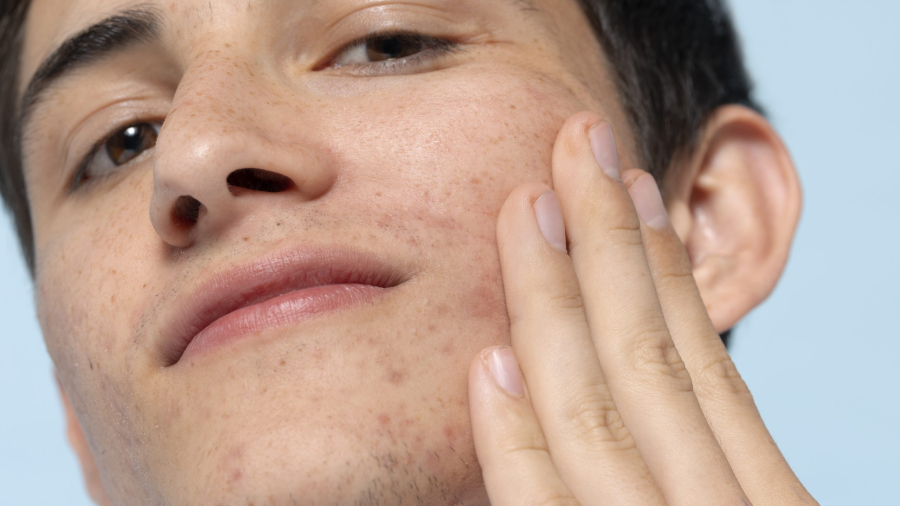Acne, a common skin condition that affects millions worldwide, is often associated with adolescence but can persist into adulthood for many. Characterized by pimples, blackheads, and inflamed red lesions, acne can impact self-esteem and quality of life. Buy Accutane Online to remove acne permanently. Understanding the main causes of acne is crucial for effective treatment and management.
Hormonal Imbalances
Hormonal changes, especially during puberty, pregnancy, and menstruation, play a significant role in acne development. Androgens, such as testosterone, stimulate the sebaceous glands to produce excess oil (sebum). This excess oil, combined with dead skin cells, can clog pores and lead to acne.
Excessive Sebum Production
Sebaceous glands produce sebum, an oily substance that helps keep the skin lubricated and moisturized. However, overproduction of sebum can contribute to acne. Factors such as genetics, hormonal imbalances, and certain medications can increase sebum production, leading to clogged pores and acne breakouts.
Clogged Pores
When excess oil, dead skin cells, and bacteria accumulate in hair follicles, they can form plugs or clogs. These clogs, known as comedones, can be open (blackheads) or closed (whiteheads). Clogged pores provide an ideal environment for acne-causing bacteria to thrive, leading to inflammation and acne lesions.
Bacterial Infections
Propionibacterium acnes (P. acnes) is a type of bacteria that commonly resides on the skin. When hair follicles become clogged, P. acnes can multiply rapidly, leading to infection and inflammation. This bacterial overgrowth is a key factor in the development of inflammatory acne lesions such as papules, pustules, and nodules.
Inflammation
Inflammatory processes play a significant role in acne. When hair follicles become clogged and infected, the body’s immune response is triggered, leading to inflammation. This inflammatory response can cause redness, swelling, and pain commonly associated with acne lesions.
Dietary Factors
While the direct link between diet and acne is still debated, certain dietary factors may contribute to acne development in some individuals. High-glycemic foods, dairy products, and foods rich in saturated fats may exacerbate acne in susceptible individuals. However, more research is needed to understand the precise role of diet in acne formation.
Stress and Lifestyle Factors
Stress can exacerbate acne through various mechanisms. It can trigger hormonal changes, increase inflammation, and lead to unhealthy coping behaviors such as poor dietary choices and inadequate skincare. Lifestyle factors such as smoking, excessive sun exposure, and using comedogenic (pore-clogging) skincare products can also contribute to acne.
Genetic Predisposition
Genetics play a role in acne susceptibility. If one or both parents have a history of acne, their offspring are more likely to develop acne as well. Genetic factors influence sebum production, skin cell turnover, and the body’s inflammatory response, all of which contribute to acne development.
Medications and Cosmetics
Certain medications and skincare products can contribute to acne or exacerbate existing acne. Examples include corticosteroids, hormonal medications, and comedogenic cosmetics. It’s essential to be mindful of product ingredients and consult a dermatologist if you suspect a particular product is causing or worsening your Pimple .
Environmental Factors
Environmental factors such as pollution, humidity, and exposure to harsh chemicals or irritants can impact skin health and contribute to pimple development. Prolonged exposure to environmental pollutants can clog pores and increase oxidative stress, leading to Pimples flare-ups.
In conclusion, Pimple is a multifactorial skin condition influenced by hormonal imbalances, excessive sebum production, clogged pores, bacterial infections, inflammation, dietary factors, stress, genetics, medications, cosmetics, and environmental factors. Understanding these main causes of Pimple is crucial for developing effective prevention strategies and treatment plans tailored to individual needs. Consulting a dermatologist can provide personalized guidance and recommendations for managing Pimples and achieving clear, healthy skin.
FAQs
Pimples plagues people of all ages, but what exactly causes those pesky pimples? Here are some frequently asked questions to shed light on the main culprits behind Pimples:
Q: What are the main causes of Pimples?
A: Pimples arises from a combination of factors:
- Excess Oil Production: Hormonal changes, especially during puberty and menstruation, can trigger sebaceous glands to produce more oil. This oil clogs pores.
- Dead Skin Cell Buildup: Skin cells normally shed, but in Pimples-prone individuals, these cells can clump and clog pores along with excess oil.
- P. acnes Bacteria: Clogged pores become a breeding ground for Propionibacterium acnes (P. acnes) bacteria. P. Pimples thrives in oil and contributes to inflammation, a key feature of Pimples.
Q: Are there any other factors that can influence Pimples?
A: Yes, several factors can play a role:
- Genetics: If your parents had Pimples, you’re more likely to experience it too.
- Diet: Sugary and processed foods might worsen Pimplesin some people. A balanced diet may be beneficial.
- Medications: Certain medications can worsen Pimples.
- Medical Conditions: PCOS and hormonal imbalances can contribute to Pimples.
Q: Why does Pimples hurt?
A: Clogged pores and P. acnes bacteria trigger inflammation. This damages the pore walls and surrounding tissue, leading to the pain associated with Pimples, especially nodules and cysts.
Q: Is there a link between the skin microbiome and Pimples?
A: Emerging research suggests the skin microbiome, the community of microorganisms living on our skin, might play a role. An imbalance might favor P. acnes growth, contributing to breakouts. More research is needed to understand this connection.
Q: How can I find out what’s causing my Pimples?
A: Consulting a dermatologist is key. They can identify your specific triggers and recommend personalized treatment options.

